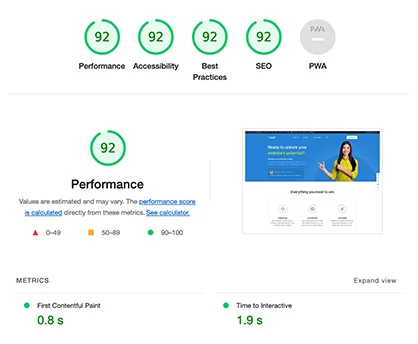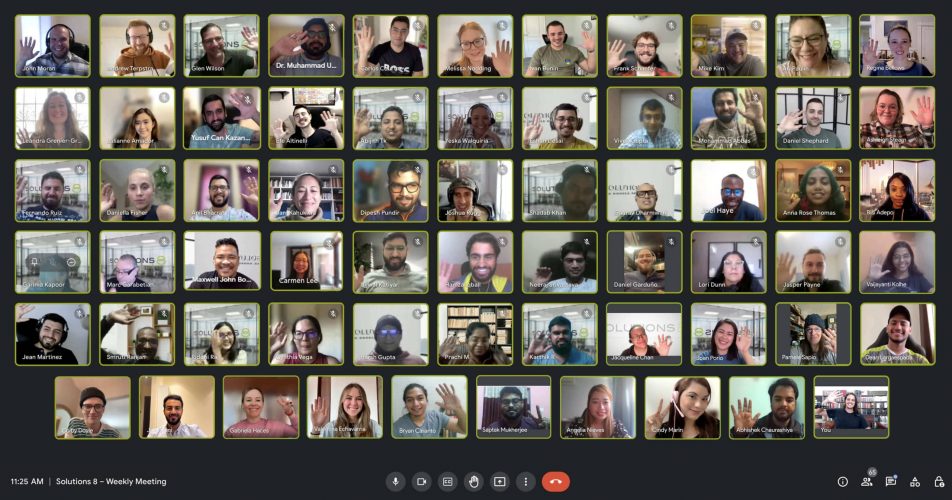Helpful glossary:
- CAC: Customer acquisition cost
- nCAC: New customer acquisition cost
- LTV: Customer lifetime value
- CPA: Cost per action
- CPC: Cost per click
- ROAS: Return on ad spend
- tROAS: Target return on ad spend
- AOV: Average order value
You may have noticed that digital marketing (and PPC advertising in particular) has a lot of jargon. You may have also noticed that our strategists are pretty much next-level smart, so occasionally they forget when they toss around terms like CAC, nCAC, and LTV that some of our viewers are still learning the lingo, so to speak.
To clear things up, Usama, Colby, and Glen met recently to discuss these key paid advertising metrics, why they matter, and what they mean in terms of campaign profitability. Below is a brief recap of their discussion, or you can watch the full video here.
Let's start with LTV
Customer lifetime value (or LTV) is the total amount of revenue generated by a single customer over the course of their relationship with your business.
And why is LTV so important? Colby explains it this way:
“If you know how much value a customer brings within its lifetime, there are a lot of instances where you can actually pay a higher acquisition cost because in the long run you know you’re going to make more off of that customer.”
He adds that LTV is one of the best ways marketers can benchmark within their paid advertising campaigns. (Benchmarking utilizes campaign performance metrics to determine which actions are effectively driving revenue for your campaigns.)
Glen agrees, saying that LTV is really the first metric that needs to be looked at.
“If you look at an account and they have a good LTV, and they have a good repeat rate, that means that you can afford a higher CPA on that first sale/new customer acquisition. Because if you know you’re going to keep making more money from that person over the lifetime value, then your CPA can be high.”

Ask yourself these three questions
Glen goes on to say that if you have a high LTV, the next step is determining what your CPA should be. To do that, he says, you need to ask yourself these three questions:
- Are you willing to take a loss on that first sale?
- Are you prepared to break even on that first sale?
- Or do you need to make money on that first sale?
The answer is going to determine how aggressively you can set the CPA or tROAS, depending on your marketing objective. Because at the end of the day, says Glen, the business that is prepared to pay more on that new customer acquisition is the one that’s going to be successful.
In other words, the more aggressive you can be on that first customer CPA, the greater your chance of seeing infinite scale potential after the first sale. And that scale potential comes through follow-ups, through email, through SMS, and any other medium you are using.
Get comfortable with a higher nCAC
Being comfortable with a higher nCAC allows media buyers to be really aggressive and just get your brand out there—but it all comes down to LTV and where your risk level is with your CPA.
To emphasize his point, Glen shares a few screenshots here from other successful PPC strategy experts. They read, Higher CPAs Is Always the Trend, Trying to Keep CPAs Low Is a Fool’s Errand, and The Game is Won with High CPAs.
Colby adds that as CPAs and CPCs go up, you can start looking at ways to improve your LTV, for example by increasing your average order value through cross-selling, up-selling, and really anything you can do to make having a customer more profitable. That way, you can just focus strictly on new customer acquisition and let all of your unpaid activities (such as email nurture) take care of that.
He adds that once you get to that stage where you feel comfortable with those higher CPC bids, you will essentially have the upper hand because you don’t have to tighten your bids and lose impression share.

It's a game of patience, says Usama
He agrees with both Colby and Glen, adding that it all comes down to how patient you are or how long you are willing to wait to get your money’s worth back.
There is a method he uses that allows you to look at projected profitability based on LTV (at 1, 3, 6, 9, and 12 months) and determine your new customer cost. Keep in mind that Usama looks at these numbers across the board and not just in one platform; otherwise it becomes too granular.
At this point in the video, Usama explains his method and shares his Excel sheet so you can follow along with his calculations. Again, he says, “It completely comes down to how long the client is willing to wait to be profitable. Do they want to be profitable in the first month? In three months? In six months? And then how much money do they want to make over a certain duration of time?”
It’s a balancing act that is going to be unique to each business, so what works for one client may not be what works for another. The general thought process is that with higher nCAC numbers, you can get in more customers. But it’s going to be harder to get a customer at a lower nCAC.
Glen puts it simply by saying, “At the end of the day, it’s he who can afford the highest CPAs.”
Bottom line: Know your LTV
And if you start doing this and realize you have to pay very low nCACs, says Colby, you need to start looking at your full marketing system. You can’t just look at Facebook, you can’t just look at Google, because that alone isn’t going to change everything for you.
Ideally, you want to have a good recurring revenue basis and let the retention be handled through other channels. The name of the game is always to see if you can try to increase your AOV so you can ultimately increase your LTV. If you do that, you can increase your nCAC, and if you can increase your nCAC, you can be more competitive.
Glen concludes the conversation by saying that the businesses that understand this concept—that they can be profitable as long as they have their sales process dialed in and have that recurring revenue—are the ones that are going to be successful and scale.
What do you think? Do you agree?
Author
Pamela is the Senior Content Writer at Solutions 8. When she's not writing, you can find her hiking in the woods with her dogs. She is currently on a quest to visit every national park in the United States.
 Pamela Sapio
Pamela Sapio










